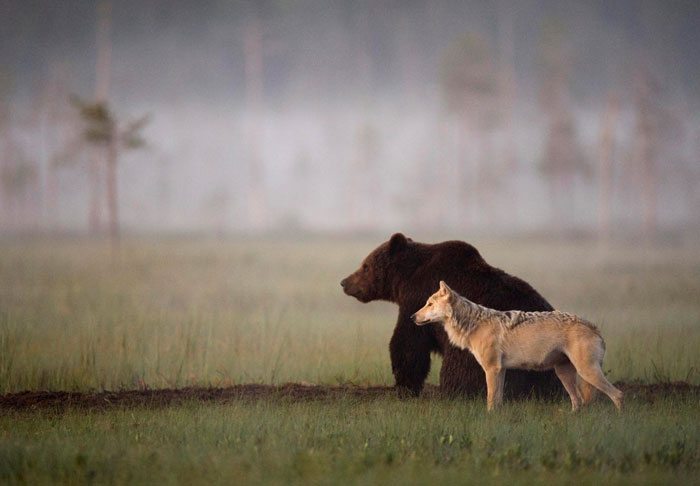Understanding the Role of Europe’s Carnivores in the Ecosystem
Europe’s carnivores play a crucial role in maintaining the balance and health of the continent’s ecosystems. These predators, including wolves, bears, lynx, and wolverines, have a significant impact on controlling prey populations, influencing vegetation growth, and even shaping the landscape.
Decoding the Importance of Apex Predators
Apex predators like wolves are essential for regulating prey populations, preventing overgrazing, and promoting biodiversity. By controlling the numbers of herbivores such as deer and elk, carnivores help maintain a stable ecosystem where plants can flourish and diverse species can coexist.
Conservation Challenges and Coexistence Efforts
Despite their vital role, Europe’s carnivores face numerous threats, including habitat loss, fragmentation, and human-wildlife conflict. Conservation efforts aimed at protecting these predators are essential to ensure their survival and the ecological balance they help maintain. Measures such as habitat restoration, wildlife corridors, and conflict resolution strategies are crucial for fostering peaceful coexistence between carnivores and humans.
Looking Ahead: Sustainable Conservation Practices
As we move forward, it is crucial to prioritize sustainable conservation practices that support both carnivores and local communities. By promoting coexistence, implementing effective management plans, and raising awareness about the importance of these predators, we can safeguard Europe’s carnivores and ensure a healthy and thriving ecosystem for generations to come.
Historical Challenges of Coexistence with Predatory Animals
Throughout history, humans have grappled with the complex issue of coexisting with predatory animals. This age-old struggle has deep roots in our evolution and societal development, shaping our interactions with the natural world.
Historically, communities faced significant challenges in balancing the need for habitat preservation and wildlife conservation with the imperative to protect human lives and livelihoods. Predatory animals, essential for ecosystem health, have often been viewed as threats to human safety and resources.
Anthropological studies reveal that ancient civilizations implemented various strategies to mitigate conflicts with predators. From building fortified settlements to developing early warning systems, our ancestors strove to safeguard themselves against potential dangers posed by wild animals.
Furthermore, folklore and mythology from different cultures around the world depict humanity’s deep-seated fear and respect for apex predators. These narratives underscore the intricate relationship between humans and predatory animals throughout history.
Today, as we face pressing environmental challenges, the historical context of coexistence with predatory animals remains relevant. Conservation efforts, scientific research, and wildlife management strategies strive to strike a delicate balance between protecting endangered species and ensuring human safety.
In conclusion, understanding the historical challenges of coexisting with predatory animals offers valuable insights for current conservation practices and wildlife policies. By learning from the past, we can navigate the complexities of human-wildlife interactions more effectively and foster a harmonious coexistence between humans and predators.
Modern Strategies for Promoting Human-Carnivore Coexistence
Discover the latest approaches that foster peaceful living between humans and carnivores. By implementing these modern strategies, communities can reduce conflicts and ensure the conservation of carnivore populations.
Utilizing Technology
One effective strategy involves using technology like GPS collars and camera traps to monitor carnivore movements, understand their behavior, and implement targeted conservation measures.
Community Engagement Programs
Engaging local communities in conservation efforts through education, workshops, and collaborative decision-making can enhance coexistence by promoting mutual understanding and shared responsibility.
Creating Wildlife Corridors
Establishing wildlife corridors and habitat connectivity networks can facilitate safe passage for carnivores, reducing human-carnivore conflicts and promoting biodiversity conservation.
The Future of Biodiversity and Conservation in Europe
Breaking Down the Headlines
As Europe grapples with increasing environmental challenges, discussions on the future of biodiversity and conservation have gained significant traction. From the impacts of climate change to the loss of habitats and species, the urgency to prioritize conservation efforts is more apparent than ever before.
The Bigger Picture
Europe has a rich natural heritage that is under threat due to various factors including urbanization, intensive agriculture, deforestation, and pollution. The decline in biodiversity not only affects ecosystems but also poses risks to human health, food security, and the economy.
What This Means Going Forward
Looking ahead, stakeholders need to embrace sustainable practices, promote biodiversity-friendly policies, and engage in collaborative conservation efforts. Investing in green infrastructure, enhancing protected areas, and fostering public awareness are vital steps towards securing a more resilient future for Europe’s biodiversity and ensuring long-term conservation success.
